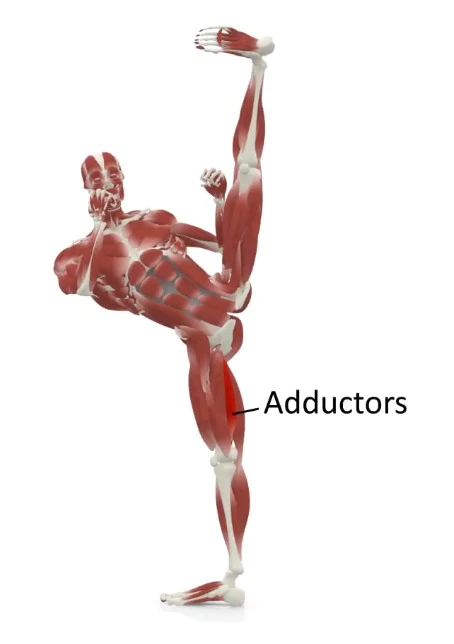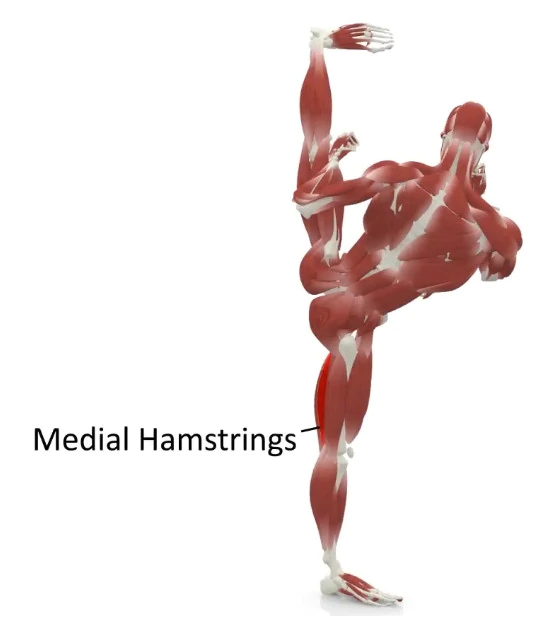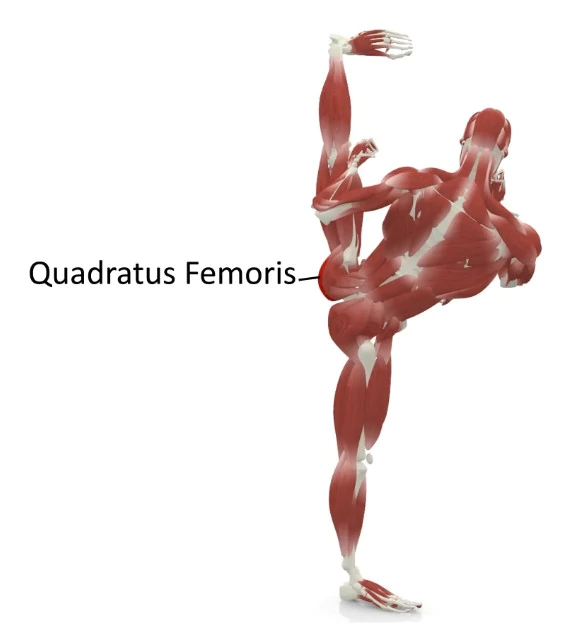How to Do a Perfect Side Kick. From Poor Side Kick to Great Side Kick
Dear Friends, In the Past 12 Years I have written numerous articles focusing on the Kinesiology and Biomechanics of kicking. Over the years many people have asked "Why". Why does my kick look like this and my Master's kick look like that? Today I will answer this question for you.
Take a look at this Tutorial Anatomy Muscle Flexibility Strength Diagram Good vs Bad video:
If you never heard of me and my work, my name is Paul Zaichik. I am the founder of ElasticSteel Method of Athletic Conditioning, EasyFlexibility, and probably most importantly for you (since you are reading about kicking) ESKMS (ElasticSteel Kick Mastery System).
So let's dive in. Take a look at the two pictures below:
So let's dive in. Take a look at the two pictures below:

Both are side kicks. Yes, the left picture looks like a back kick. But this is how, many people throw a side kick. The picture on the right is actually an animation of my own kick. Before you say that the left picture is years away from the right one, cheer up! With the right training, the kick on the left will morph into the perfect kick on the right in just a few months. Again, With Correct Training!

The Supporting Leg
So let's look at the supporting leg. Why does the kick on the left look like a back kick?
Look at the left side of the pelvis. Do you see it is dropped? That is why the kick looks like that. Why is the kicking side of the pelvis not up? Because the medial rotators are too tight. In this case the medial rotators are also the adductors.
This means:
Look at the left side of the pelvis. Do you see it is dropped? That is why the kick looks like that. Why is the kicking side of the pelvis not up? Because the medial rotators are too tight. In this case the medial rotators are also the adductors.
This means:
- Adductor Longus
- Adductor Brevis
- Adductor Magnus
- Gracilis
Medial Hamstrings are also the medial rotators and being short there will prevent proper hip turnout. To a lesser degree pectineus can prevent an outward rotation as well in this position. So now we know why the torso is looking down. Because of the lack of rotation in the supporting leg.


36 years of Martial Arts experience and in-depth knowledge of the human body, now offered to YOU in 24 chapters.
When you get this Kick combo, you will get:
- Very Short and to the point and very easy to understand and follow routines for basic kicks.
- The quality improvement is focused on Front Kicks, Roundhouse Kicks, Side Kicks, Hook Kicks and Axe kicks.
- Each routine designed for quick mastery of a kick and a chosen quality.
- Especially selected exercises that have been carefully chosen from many already very effective and rare exercises, to achieve the fastest results. (Each one for a specific quality or a specific kick).
- Routines to master advanced kicks as well. (Flying side kick, Scorpion Kick, Flying Side Kick, Flying Two Direction Scissors kick).
The Height of the Kick
The next obvious question. The height!!! Everyone wants a high kick. The height of the kick has a lot more to do with the supporting leg than with the kicking leg.
Tight hamstrings (More Medial), together with Adductor Magnus, the ischial component is what prevents the kicking side of the pelvis to rise up enough to throw the kick high.
In other words, the Abduction combined with the lateral rotation is missing from the supporting leg.
Tight hamstrings (More Medial), together with Adductor Magnus, the ischial component is what prevents the kicking side of the pelvis to rise up enough to throw the kick high.
In other words, the Abduction combined with the lateral rotation is missing from the supporting leg.
How to Use This Info?
At this point you are probably wondering... You just threw a bunch of muscle names, and joint actions at me. But how can I use all this info. You can find the stretching techniques for those specific muscles that are preventing a good kick and do those. OR you can just do the ElasticSteel Kick Mastery System (ESKMS) and get great kicks that way.
The Kicking Leg

Alright now. What about the kicking leg?
Well having flexible adductors (Inner thigh muscles) on the kicking leg helps. However, in the medially rotated position, the range is very small. Also remember that Quadratus Femoris is also an adductor and medial rotator. So these muscles must be taken care of as well.
Well having flexible adductors (Inner thigh muscles) on the kicking leg helps. However, in the medially rotated position, the range is very small. Also remember that Quadratus Femoris is also an adductor and medial rotator. So these muscles must be taken care of as well.
The Torso


And Finally The torso. Have you seen someone throw a very high kick, just to drop their torso so low, that the head almost touches the floor?
Does that look good? Well, you tell me. Also if you want to spar or fight in that position, be prepared to spend valuable time, dropping the torso and then raising it back up again during each kick. I rather keep mine up.
To do that, all the lateral flexors on the non-kicking side must be flexible. That is, Rectus Abdominis, Obliques, Psoas Minor and Major, Spinal Extensors, Quadratus Lumborum.
Flexible torso is really what makes a difference between a high kick and a beautiful high kick. An easy to see kick and a hard to see kick. Think about it. If you see the head dropping, you know the kick is coming.
Flexibility in the core allows you to throw that kick without sending a warning signal first.
Does that look good? Well, you tell me. Also if you want to spar or fight in that position, be prepared to spend valuable time, dropping the torso and then raising it back up again during each kick. I rather keep mine up.
To do that, all the lateral flexors on the non-kicking side must be flexible. That is, Rectus Abdominis, Obliques, Psoas Minor and Major, Spinal Extensors, Quadratus Lumborum.
Flexible torso is really what makes a difference between a high kick and a beautiful high kick. An easy to see kick and a hard to see kick. Think about it. If you see the head dropping, you know the kick is coming.
Flexibility in the core allows you to throw that kick without sending a warning signal first.
What's Next
In the next article we will talk about the muscles that need to be stronger to convert the kick on the left to the one on the right. And remember with right training, it takes very little time. "Keep kicking till you get better" is an old, outdated way. See what we offer instead.
36 years of Martial Arts experience and in-depth knowledge of the human body, now offered to YOU in 24 chapters.
When you get this Kick combo, you will get:
- Very Short and to the point and very easy to understand and follow routines for basic kicks.
- The quality improvement is focused on Front Kicks, Roundhouse Kicks, Side Kicks, Hook Kicks and Axe kicks.
- Each routine designed for quick mastery of a kick and a chosen quality.
- Especially selected exercises that have been carefully chosen from many already very effective and rare exercises, to achieve the fastest results. (Each one for a specific quality or a specific kick).
- Routines to master advanced kicks as well. (Flying side kick, Scorpion Kick, Flying Side Kick, Flying Two Direction Scissors kick).
© ElasticSteel Corp., EasyFlexibility, Paul Zaichik, et. El., 2022. No part of the materials available through ElasticSteel.com, EasyFlexiiblity.com, site may be copied, photocopied, reproduced, translated or reduced to any electronic medium or machine-readable form, in whole or in part, without prior written consent of Paul Zaichik EasyFlexibility.com, Elasticsteel.com.. Any other reproduction in any form without the permission of Paul Zaichik EasyFlexibility.com, Elasticsteel.com is prohibited. All materials contained on this site are protected by United States copyright law and may not be reproduced, distributed, transmitted, displayed, published or broadcast without the prior written permission of Paul Zaichik, EasyFlexibility.com, Elasticsteel.com.





Comments
Leave a comment